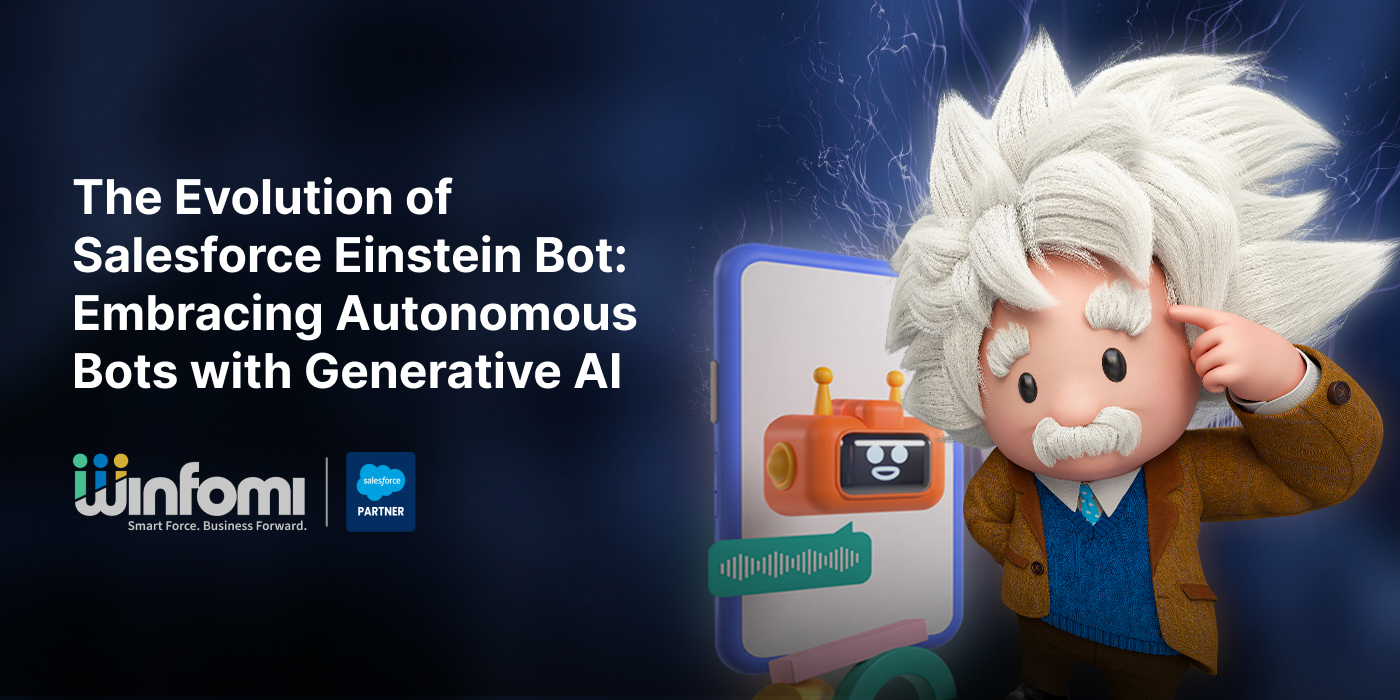

Share:
Table Of Contents
- The Evolution of Salesforce Einstein Bot: Embracing Autonomous Bots with Generative AI
- Understanding the Salesforce Einstein Bot
- Enter Generative AI: The Rise of Autonomous Bots
- Will Autonomous Bots Replace Einstein Bots?
- The Transition: A Coexistence Rather than Replacement
- What Does This Mean for Businesses?
- Conclusion: The Future is Autonomous
The Evolution of Salesforce Einstein Bot: Embracing Autonomous Bots with Generative AI
In the ever-evolving landscape of artificial intelligence, Salesforce’s Einstein Bot has been a significant player, providing businesses with powerful tools to enhance customer interactions through automation. However, as AI technology advances, the question arises: will the Einstein Bot be replaced by the new generation of Autonomous Bots powered by Generative AI?
Understanding the Salesforce Einstein Bot
Before diving into the future, let’s take a moment to appreciate what the Salesforce Einstein Bot has brought to the table. Einstein Bots are AI-driven chatbots embedded within the Salesforce platform, designed to automate customer interactions across various channels. They assist businesses in handling routine tasks such as answering FAQs, guiding users through processes, and even managing case resolutions—all while seamlessly integrating with Salesforce CRM data.
Einstein Bots have empowered companies to deliver faster, more efficient customer service, freeing up human agents to focus on more complex tasks. But like all technologies, there’s always room for improvement.
Enter Generative AI: The Rise of Autonomous Bots
Generative AI represents the next frontier in artificial intelligence, and its integration into autonomous bots marks a significant shift in how we think about automated customer interactions. Unlike traditional bots, which rely on predefined rules and scripts, autonomous bots with Generative AI leverage advanced machine learning models to understand and generate human-like text, allowing them to engage in more natural and dynamic conversations.
This leap in technology means that autonomous bots are not just limited to responding to preset queries—they can now generate unique responses, anticipate user needs, and even offer personalized recommendations based on real-time data analysis.
Will Autonomous Bots Replace Einstein Bots?
The potential for autonomous bots to replace Einstein Bots is not just a possibility but a likely evolution. Here’s why:
- Enhanced Conversational Capabilities: Autonomous bots with Generative AI can understand context better and provide more relevant, personalized responses. This shift from rule-based interactions to contextual conversations is a game-changer for customer service.
- calability and Adaptability: As customer expectations evolve, so too must the tools businesses use to meet those expectations. Autonomous bots can scale and adapt to new scenarios without extensive reprogramming, making them more flexible and cost-effective in the long run.
- Seamless Integration with AI-driven Insights: Autonomous bots are designed to work hand-in-hand with other AI tools, such as predictive analytics and recommendation engines. This integration allows for a more holistic approach to customer service, where bots can anticipate customer needs and offer proactive solutions.
- Continuous Learning: Unlike traditional bots that require manual updates to improve, autonomous bots with Generative AI can continuously learn from interactions. This self-improvement loop means that the bot becomes more effective over time, reducing the need for ongoing maintenance.
The Transition: A Coexistence Rather than Replacement
However, it’s important to note that the transition from Einstein Bots to autonomous bots with Generative AI might not be an abrupt replacement. Instead, it’s more likely to be a gradual evolution where both systems coexist, each playing to its strengths.
For instance, while autonomous bots could handle more complex and dynamic interactions, Einstein Bots could continue to manage more straightforward, transactional tasks. This hybrid approach allows businesses to leverage the best of both worlds, ensuring a smooth transition and maximizing ROI.
What Does This Mean for Businesses?
For businesses already using Salesforce Einstein Bots, the introduction of autonomous bots with Generative AI presents an exciting opportunity. It’s a chance to elevate customer interactions to a new level of sophistication, offering more personalized and engaging experiences.
However, it also requires a strategic approach to implementation. Companies need to evaluate their specific needs, customer expectations, and existing infrastructure to determine how best to integrate autonomous bots into their operations.
Conclusion: The Future is Autonomous
The future of customer interaction is undeniably moving towards greater autonomy, powered by the capabilities of Generative AI. While Einstein Bots have set the stage for AI-driven customer service, the rise of autonomous bots promises to take this to new heights.
Businesses that embrace this evolution will not only stay ahead of the curve but also set new standards in customer engagement. As we look forward to this exciting transformation, one thing is clear: the future is autonomous, and it’s already knocking on our door.
This transition marks not just the replacement of a tool but the beginning of a new era in AI-driven customer service—one where bots are not just assistants but intelligent partners in delivering exceptional customer experiences.




